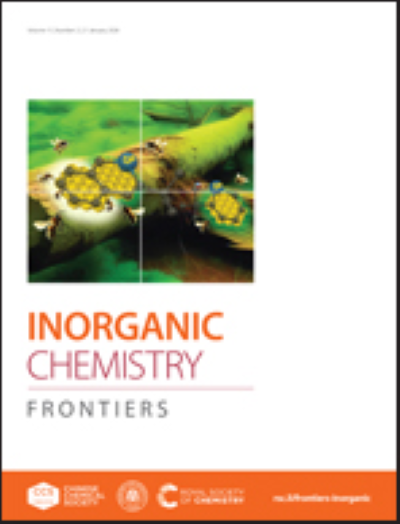影响Pt(II)配合物作用方式的反式羧酸/氯基轴结构变化
IF 6.1
1区 化学
Q1 CHEMISTRY, INORGANIC & NUCLEAR
引用次数: 0
摘要
反式铂(II)配合物的设计标志着非常规抗癌金属药物设计的一个重要转折点。与顺铂相比,这些复合物表现出明显不同的细胞反应,并且通常对顺铂耐药细胞系有活性。在这项研究中,我们合成并充分表征了两个新的Pt(II)配合物,将一个醋酸盐(-OCOCH3)配体(X)引入trans-PtXX ‘轴,其中X ’是醋酸盐或氯基。我们在一组恶性(Capan-1, B16, MCF7, HCT-116, CT26和P31)和非恶性(HaCaT, HUVEC, BEC, MCF10A)细胞系中评估了它们的细胞毒性,发现仅含有一个醋酸酯的复合物比含有两个醋酸酯的复合物(X=X ')更具活性和选择性。此外,这两种复合物通过非dna相关机制诱导癌细胞死亡,在细胞摄取途径和顺铂的作用方式上存在差异。本文章由计算机程序翻译,如有差异,请以英文原文为准。
Structural variations in the trans-carboxylate/chlorido axis that impact on the mode of action of Pt(II) complexes
The design of trans-platinum(II) complexes marked a significant turning point in the design of unconventional anticancer metallodrugs. Compared to cisplatin, these complexes exhibit distinctly different cellular responses and are often active against cisplatin-resistant cell lines. In this study, we synthesized and fully characterized two new Pt(II) complexes introducing one acetate (-OCOCH3) ligand (X) into the trans-PtXX’ axis where X’ is either acetate or chlorido. We evaluated their cytotoxicity across a panel of malignant (Capan-1, B16, MCF7, HCT-116, CT26 and P31) and non-malignant (HaCaT, HUVEC, BEC, MCF10A) cell lines, finding that the complex with only one acetate in trans to a chlorido group is more active and selective than the complex with two acetates (X=X’). Furthermore, the two complexes differ in their cellular uptake route as well as mode of action from cisplatin by inducing cancer cell death via non-DNA-associated mechanisms.
求助全文
通过发布文献求助,成功后即可免费获取论文全文。
去求助
来源期刊

Inorganic Chemistry Frontiers
CHEMISTRY, INORGANIC & NUCLEAR-
CiteScore
10.40
自引率
7.10%
发文量
587
审稿时长
1.2 months
期刊介绍:
The international, high quality journal for interdisciplinary research between inorganic chemistry and related subjects
 求助内容:
求助内容: 应助结果提醒方式:
应助结果提醒方式:


